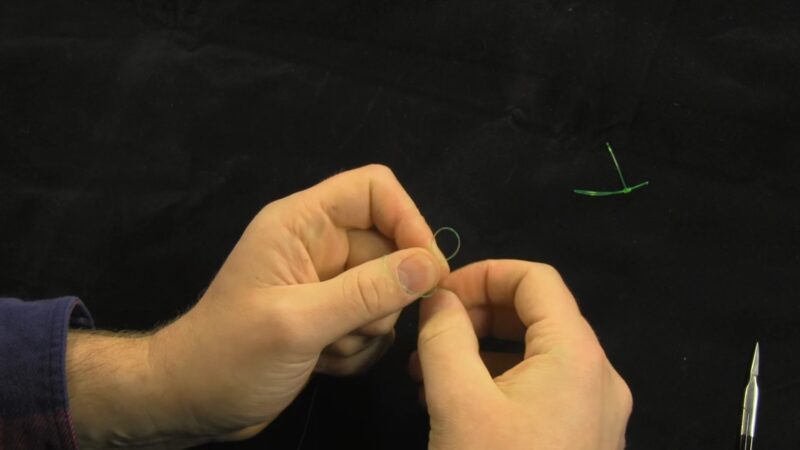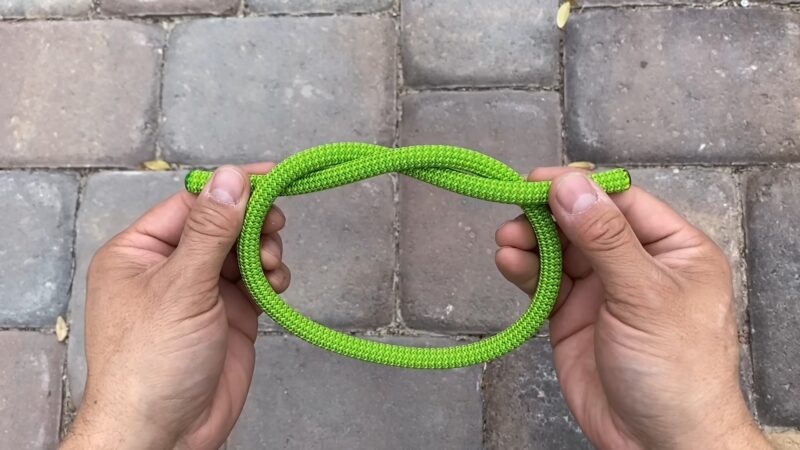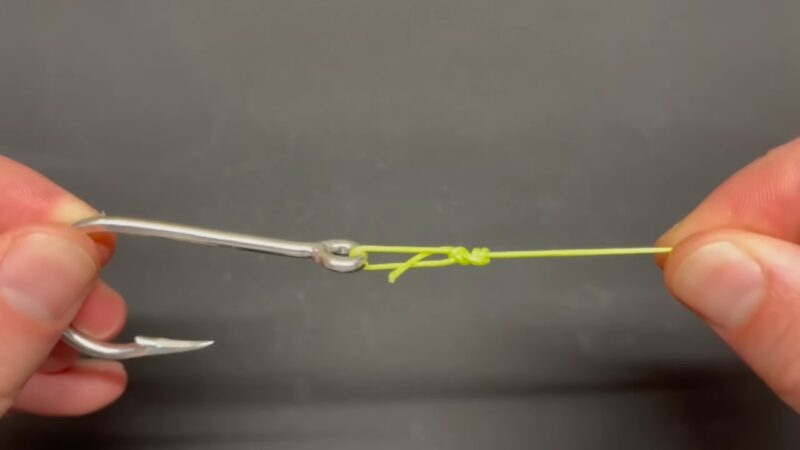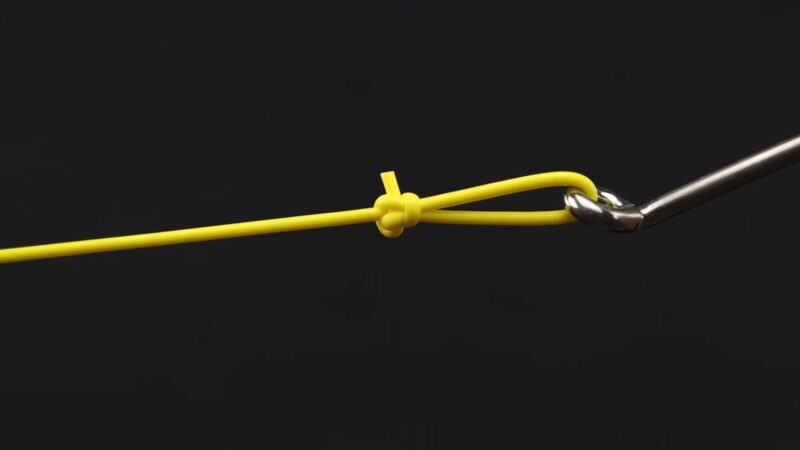Loop knots are indispensable tools in the angler’s arsenal, providing a reliable and versatile means of attaching hooks to the fishing line. Whether you’re a seasoned fisherman or just starting, mastering a variety of loop knots can significantly enhance your fishing experience.
This guide discusses the details of three popular loop knots: the Kreh loop knot, the perfection loop knot, and the surgeon’s loop knot. Each knot serves a unique purpose and offers different advantages, making them valuable for various fishing scenarios.
In this article, you will learn:
- Kreh Loop Knot: Learn to tie this non-slip loop knot, ideal for preventing snags and allowing lures to move freely in the water.
- Perfection Loop Knot: Understand the steps to create this simple and effective loop, perfect for connecting leaders to fly lines.
- Surgeon’s Loop Knot: Discover how to tie this beginner-friendly knot, useful for creating loops at the end of the line for attaching leaders or sinkers.
- Knot Tying Tips: Gain insights into enhancing knot efficiency, including proper tightening techniques, the importance of consistent practice, and the role of line quality.
- Avoiding Common Mistakes: Learn to identify and avoid typical errors in knot tying, such as over-tightening and incorrect wrapping, to ensure stronger and more reliable knots.
The Kreh Loop Knot: A Non-Slip Solution
Also known as the non-slip loop knot, the Kreh loop knot is celebrated for its strength and ability to prevent snags. It’s particularly effective for lures and flies, allowing them to move freely and naturally in the water.
Step-by-Step Guide to Tying the Kreh Loop Knot
- Start with an Overhand Knot: Begin by tying a simple overhand knot in your fishing line, leaving a sufficient tail end.
- Thread the Hook: Pass the tail end of the line through the eye of the hook or lure.
- Wrap the Line: Hold the hook and bring the tail end back towards the overhand knot. Wrap it around the standing part of the line five to seven times.
- Back Through the Overhand Knot: Thread the tail end back through the overhand knot, entering from the same direction as it initially came out.
- Tighten the Knot: Moisten the knot for lubrication, and then pull both the standing line and the tag end to tighten the knot snugly against the eye of the hook.
The Perfection Loop Knot: Simple and Effective

The perfection loop knot is renowned for its simplicity and the neat loop it forms. This knot is ideal for connecting leaders to fly lines and creating loop-to-loop connections.
How to Tie the Perfection Loop Knot
- Form a Loop: Make a loop in the line and lay it over the standing part, creating a second loop that hangs at the bottom.
- Overhand Knot with Doubled Line: Hold the intersection point between the two loops and tie an overhand knot with the doubled line of the bottom loop, leaving the top loop outside the overhand knot.
- Wrap Around the Main Line: Take the bottom loop and wrap it around the main line and the top loop.
- Finalize the Knot: While holding the intersection point, pull the standing line to tighten the knot. Ensure the loop remains formed and the knot tightens evenly.
The Surgeon’s Loop Knot: Perfect for Beginners
The surgeon’s loop knot is a beginner-friendly option known for its simplicity and ease of tying. It’s particularly useful for creating a loop at the end of the line for attaching leaders or sinkers.
Tying the Surgeon’s Loop Knot: A Step-by-Step Guide
- Create a Simple Loop: Double back the line to form a simple loop.
- First Overhand Knot: Tie an overhand knot with the doubled line, ensuring the loop is large enough to pass the doubled line through.
- Second Overhand Knot: Pass the doubled line through the loop of the first overhand knot again, forming a second overhand knot.
- Tighten the Knot: Wet the knot and pull both the standing line and the doubled line to tighten the knots against each other, forming the surgeon’s loop.
Advanced Tips and Tricks
While learning the basic steps to tie these knots is crucial, some additional tips and techniques can enhance their effectiveness and durability.
1. Consistent Practice
Regularly practicing these knots is essential. Over time, this practice leads to a more intuitive and quicker knot-tying process, which can be invaluable in changing fishing conditions.
2. Quality of the Line
The type of fishing line you use can significantly affect the strength and reliability of your knots. Experiment with different lines to find the one that works best with each knot type.
3. Knot Tightening
Proper tightening is critical. Ensure that the wraps in your knots are neatly aligned and not overlapping, as this can weaken the knot.
4. Moisturizing the Knot
Before tightening, always moisten the knot with water or saliva. This reduces friction and allows the knot to tighten smoothly, minimizing line damage.
5. Testing the Knot
After tying your knot, test its strength by gently pulling on the line. This helps identify any weaknesses before you start fishing.
Common Mistakes to Avoid
Even experienced anglers can make mistakes when tying loop knots. Being aware of these common errors can help improve your knot-tying skills.
1. Over-Tightening
Avoid pulling too hard when tightening the knot, as this can cause the line to weaken or break.
2. Incorrect Wrapping
Ensure you follow the correct number of wraps for each knot. Too few wraps can lead to a weak knot, while too many can make the knot bulky and less effective.
3. Uneven Loops
Particularly in the perfection and surgeon’s loop knots, uneven loops can result in a less secure and imbalanced knot.
4. Not Leaving Enough Tail
Leaving too short a tail end can cause the knot to unravel. Ensure you have enough lines to work with.
Adapting Knots for Different Fishing Conditions

Different fishing environments and target species may require slight modifications to these standard knots.
1. Saltwater Fishing
For saltwater fishing, where you might encounter larger and stronger fish, consider making more wraps in your Kreh loop knot for added strength.
2. Fly Fishing
In fly fishing, the perfect loop knot is ideal. Its slim profile and strength make it suitable for delicate presentations.
3. Ice Fishing
For ice fishing, using the surgeon’s loop with a heavier line can be advantageous, as it is easier to tie with cold, numb fingers and provides a strong hold.
FAQs

Can I use the Kreh loop knot with braided fishing lines?
Yes, it works well with braided lines. However, due to the slick nature of braided lines, it’s recommended to increase the number of wraps to ensure the knot holds securely.
Is the perfection loop knot suitable for heavy lures?
It is better suited for lighter lures and flies. For heavier lures, consider using the Kreh loop knot for its strength and stability.
How long should the tail end be when tying a surgeon’s loop knot?
Generally, leave at least 6 inches of the tail end when tying it. This length provides enough room to comfortably make the necessary wraps and tighten the knot securely.
Can the Kreh loop knot be used for topwater fishing lures?
Yes, it is excellent for topwater lures as it allows the lure to move more naturally on the surface, enhancing its effectiveness.
Do weather conditions affect the tying of these loop knots?
Extreme weather conditions, like cold or wet weather, can make knot-tying more challenging. In such conditions, simpler knots like the surgeon’s loop are often easier to tie.
How does the loop size in a perfection loop knot affect lure performance?
The size of the loop in a perfection loop knot can impact lure action. A smaller loop provides a more direct connection and quicker lure response, while a larger loop allows for more natural and fluid movement.
Final Words
Mastering the Kreh, the perfection, and the surgeon’s loop knot can significantly improve your fishing efficiency and success. Each knot has its own set of advantages and applications, making them valuable additions to any angler’s skill set. Practice these knots regularly to ensure you’re prepared for any fishing scenario you encounter.
Follow our instructions and you will master these knots in no time. You can find a perfect place to test the quality of your knot in some of Georgia’s most beautiful State parks, where fishing is often a go-to activity. Practice these knots regularly to ensure you’re prepared for any fishing scenario you encounter.
